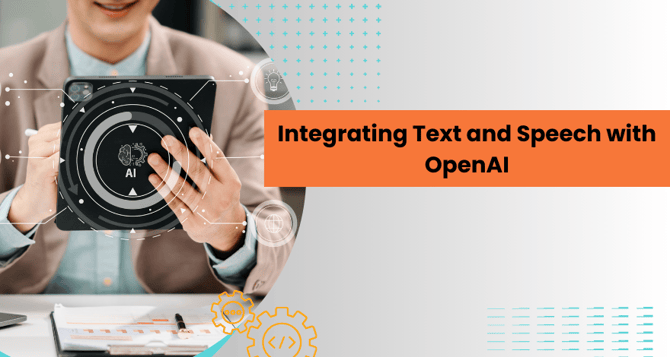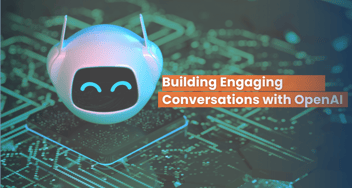Multimodal Conversational AI: Integrating Text and Speech with OpenAI
The article discusses OpenAI's breakthroughs in conversational AI, specifically the integration of text and speech. Emphasizing advancements in natural language processing AI, it highlights the resulting more immersive and human-like user experience, marking a significant step forward in the evolution of conversational AI.

In recent years, conversational AI has made significant strides in natural language understanding and generation. OpenAI, a leader in the field of artificial intelligence, has been at the forefront of developing cutting-edge models that enable machines to interact with humans in a more natural and human-like way.
One of the most exciting developments in this field is the integration of text and speech in conversational AI systems, allowing for more multimodal and immersive user experiences.
This progress is underpinned by advancements in natural language processing AI, enhancing the ability of these systems to comprehend and generate human-like language, thereby improving overall communication and interaction between machines and users.
What is Multimodal Conversational AI?
Multimodal Conversational AI is a technology that combines multiple modes of communication, such as text and speech, to enable more natural and versatile interactions between humans and machines.
Instead of relying solely on text-based input and output, multimodal AI systems can understand and generate both text and speech, making them more adaptable to a wide range of applications, from chatbots and virtual assistants to transcription services and accessibility tools.
OpenAI's GPT-3 and Whisper
OpenAI offers two key technologies for building multimodal conversational AI systems: GPT-3 for text generation and understanding, and Whisper for speech recognition and synthesis.
GPT-3
GPT-3 is a state-of-the-art language model capable of generating human-like text. You can use GPT-3 to create conversational agents that can chat with users in natural language. To get started with GPT-3, you'll need to sign up for access to the OpenAI API and obtain an API key.
Here's a code snippet in Python to interact with GPT-3 using the OpenAI Python SDK:
Whisper
Whisper is OpenAI's automatic speech recognition (ASR) system, which can convert spoken language into written text. You can use Whisper to transcribe speech from audio recordings or build voice-controlled applications.
Here's an example of how to use Whisper for speech recognition in Python:

Integrating Text and Speech
Now that we have seen how to use GPT-3 for text and Whisper for speech separately, let's explore how to integrate these technologies to create a multimodal conversational AI system. In this example, we'll build a chatbot that can both understand and generate text and speech.

In this example, the chatbot showcases its versatility by accepting both text and audio input from users. When presented with audio input via a URL, the bot leverages Whisper for transcription and then utilizes GPT-3 to generate a text response.
Alternatively, when users provide text input directly, the bot relies on GPT-3 for both understanding and crafting responses. This highlights the prowess of integrating text and speech in conversational AI, emphasizing the significance of natural language processing AI in creating adaptable and user-friendly applications.
Conclusion
Multimodal conversational AI, which combines text and speech understanding and generation, opens up exciting possibilities for creating more immersive and versatile AI-powered applications.
Elevate Your Business with Custom AI Solutions
Our AI development services offer a tailored approach to meet your specific business needs. Let's discuss your project today!
OpenAI's GPT-3 and Whisper are powerful tools for building such systems, and by integrating them effectively, you can create AI applications that provide a more natural and seamless interaction experience for users. Start experimenting with these technologies today to develop your own multimodal conversational AI solutions.













